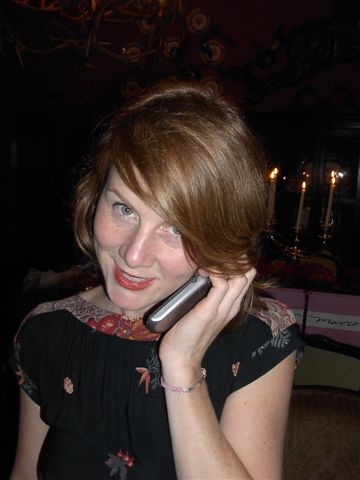Sound the trumpets and hail Chanel! October 1 marks the Officially Recognized Day of the introduction of the designer’s iconic and history-making Little Black Dress. Yep, it was on this day in 1926 that American Vogue magazine ran a small illustration (left) of what it called Chanel’s “Ford” dress, likening the modest garment to the reliable Model-T of the era and hearkening Henry Ford’s line, "any customer can have a car painted in any colour that he wants so long as it's black." This was a time when twice a month, Vogue faithfully offered lengthy reviews of the Paris fashions, page after page of sketches of the latest coats, dresses, hats and gloves from the top French designers. Jeanne Lanvin, Jean Patou, Jeanne Paquin, Madeline Voinnet and Jacques Doucet received pages of descriptions detailing every element of their designs, from cuff to hemlines to buttons, and, occasionally, Mlle. Chanel earned a paragraph or two. But in 1926, Chanel’s casual designs were hardly considered true haute couture to Manhattan society ladies and Vogue editors; her jersey sportswear and unadorned dresses alone didn’t garner the six-day trip across the Atlantic by boat. So when the small sketch appeared in the October 1 issue it barely caused a stir, and it definitely didn’t incite the kind of rapturous praise the LBD, as we now call it, has received in recent decades. No, on this day, Vogue even curbed its usual gushing prose and accompanied the illustration with the following text:
The Chanel "Ford" the frock that all the world will wear is model 817 of black crepe de chine. The bodice blouses slightly at the front and sides and has a tight bolero at the back. Especially chic is the arrangement of tiny tucks which cross in front. Imported by Saks."
The end. And that was that for Chanel’s Model T. Vogue did not mention it again for some time, though the following month Vogue Paris called it the “uniform for the modern woman.”
It’s helpful to keep in mind that the idea of a “little black dress” wasn’t exactly appealing to the average 1926 woman. This was an era when, for the first time in American history, young women were moving to cities—often alone—and taking smart jobs in offices and boutiques. The flapper lifestyle was racy even by today’s standards: The cute bobbed hair, heavy makeup, loosely belted coats and unbuckled galoshes were accessorized with a lifestyle of cocktails, cigarettes, Charlestons and casual sex. “Shopping” as a verb was only just entering the vocabulary as a form of recreation, not as in, “I need to shop for groceries,” but as in “let’s go shopping!” Of course these fresh, young revolutionary women would have had little interest in one of Chanel’s dreary smocks; they already owned one black dress for funerals only, thank you very much, and had no interest in spending what little money they had on another.
To read the full story, visit On This Day In Fashion.

No comments:
Post a Comment